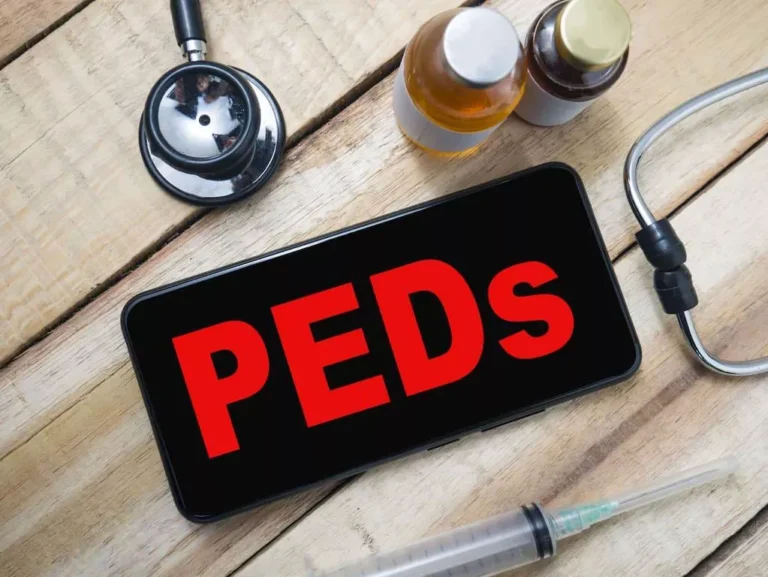
Cardiac remodeling is a global process that myocardium establishes as a result of different aggressions 31,132. Heart myocytes are relatively resistant to the toxic effect of ethanol, developing a functional and structural compensatory mechanism able to minimize or repair the ethanol-induced myocyte damage 20,31,39. Structurally, hypertrophy of myocytes is seen in the early stages to avoid contractile depression 52,107,125. Myocytolysis progressively alcoholic cardiomyopathy symptoms develops, disturbing the sarcomere contractile system. The heart output is progressively lower in a dose-dependent relationship with the lifetime accumulated total dose of alcohol consumed 38. Several growth factors and cardiomyokines exert an autocrine or paracrine effect that tries to compensate for this heart damage 119,133.

Recent Activity
As a result, benzodiazepines have been the drug of choice in treating the cerebrovascular and subsequent systemic hyperadrenergic complications of cocaine, and nitroprusside or phentolamine being advocated for peripheral vasodilatory effects. It is now becoming apparent that treatment of cardiovascular effects of cocaine should involve a multifactorial approach to combat both central nervous system and peripheral vasospastic effects of cocaine. Ethyl alcohol has detrimental effects on myocardial metabolism; nevertheless, the pathogenetic mechanisms of alcoholic cardiomyopathy remain uncertain.
- In fact, Brandt et al.54 observed that in ALDH2-deficient mice, the most important increase in mitochondrial superoxide levels (which is the major species of ROS) is due to acetaldehyde, not ethanol.
- This is because the ethanol molecule has a small size and is highly reactive, with many cell targets.
- Acetaldehyde produced in the liver from metabolism via alcohol dehydrogenase may also reach the heart and produce adverse effects.
Dilated cardiomyopathy
It has been said that ethanol is the “perfect drug” because of its pleasant effects but damaging long-term effect 1,6. It is distributed worldwide, with easy social access, and is pleasant when consumed, with positive sensations of welfare, but its negative effects, which include depressive and damaging noxious health effects, are reserved for later. This dual effect creates an additional difficulty to achieve an effective control. Ethanol is one of the most addictive drugs for humans, with high physical and psychological addiction potential 7.
- However, these new strategies have not yet demonstrated their real effectiveness in clinical trials, require further evaluation, and are not approved for clinical use 147.
- The addition of zinc to the diet prevented the occurrence of cardiac fibrosis but not hypertrophy.
- Additionally, echocardiographic data suggest that subjects who do not fully withdraw from alcohol consumption, but who reduce it to moderate amounts recover LVEF in a similar manner to strict non-drinkers.
- Accelerated coronary atherosclerosis, coronary vasculitis, coronary spasm, or coronary thrombosis can also be seen in cocaine-related heart disease.
TREATMENT
- Furthermore, there are conflicting data among studies regarding the prognosis of the condition, with some showing overall mortality near 60% and others showing a mortality rate of only 19% (Table 1).
- Some of these papers have also described the recovery of LVEF in many subjects after a period of alcohol withdrawal15-17.
- They appear when ventricle dilatation, hypertrophy, and dysfunction are established.
- However, these findings are not specific and do not differentiate AC from other forms of dilated cardiomyopathy 4.
- For a comprehensive overview see Table 1 (combined data from 6, 8, 24, 28).
Despite these features, the structural changes do not seem to be specific, furthermore, they are not qualitatively different from those found in idiopathic DCM and they do not allow us to differentiate between the two conditions44. It also appears that the changes emerging in ACM patients only differ from idiopathic DCM in quantitative terms, with histological changes being more striking in idiopathic DCM than in ACM44. Finally, it should be noted that McKenna and co-workers, in one of the most frequently cited papers in the ACM field, reported an incidence of 40% in 100 individuals suffering from idiopathic DCM, but in this case the consumption threshold used was only g/d8. Additionally, the accepted ACM definition does not take into account a patient’s sex or body mass index (BMI). As women typically have a lower BMI than men, a similar amount of alcohol would reach a woman’s heart after consuming smaller quantities of alcohol.
Alcoholic-dilated Cardiomyopathy (ACM) is the most prevalent form of ethanol-induced heart damage. Ethanol induces ACM in a dose-dependent manner, independently of nutrition, vitamin, or electrolyte disturbances. ACM produces a progressive reduction in myocardial contractility and heart chamber dilatation, leading to heart failure episodes and arrhythmias.

This review will provide an updated view of this condition, including its epidemiology, pathogenesis, diagnosis, and treatment (Graphical Abstract). Many changes can be observed including premature atrial or ventricular contractions, supraventricular tachycardias, atrioventricular blocks, bundle branch blocks, QT prolongation, non-specific ST and T wave changes and abnormal Q waves. Certain microscopic features may suggest damage secondary to alcohol causing cardiomyopathy.
- The lowest prevalence of ACM among DCM (3.8%) was obtained from a series of 673 patients admitted to hospital consecutively due to HF in the state of Maryland27.
- They aim to control oxidative damage, myocyte hypertrophy, interstitial fibrosis, and persistent apoptosis.
- In another study on this topic, Lazarević et al23 divided a cohort of 89 asymptomatic individuals whose consumption exceeded 80 g/d (8 standard units) into 3 groups according to the duration of their alcohol abuse.
- The achievement of total alcohol abstinence represents the most effective strategy for the treatment of alcohol-induced ogan damage, including alcoholic cardiomyopathy, in order to promote the recovery of left ventricular dysfunction 4,11.
- If you have alcoholic cardiomyopathy, you may benefit from attending group support meetings for people struggling with AUD and subsequent ACM.
Occidental Berberi is the term used for the clinical scenario caused by thiamine deficit, a situation commonly present in chronic alcohol misuse, and was attributed as the cause of ACM 68,69. Similarly, electrolyte (Na, K, Ca, Mg, P) deficiencies or disturbances may play a major role in cardiac function, and ethanol misuse may be related to them 52. Selenium deficit (Keshan disease in China) could also induce ACM in specific areas 70.

Clinical manifestations and diagnosis of alcohol-induced cardiomyopathy

Both the absence of a direct correlation and the theory of the existence of a threshold dose (above which some alcoholics develop ACM) require the presence of individual susceptibility to alcohol induced cardiac damage63. It is unknown whether individual susceptibility would be related to increased vulnerability at the myocardial level and/or to impaired alcohol metabolism. Daily consumption of low to moderate amounts of alcohol has beneficial effects on cardiovascular health among both ischemic and non-ischemic patients1-3. In contrast, chronic and excessive alcohol consumption could lead to progressive cardiac dysfunction and heart failure (HF)3. The achievement of total alcohol abstinence represents the most effective strategy for the treatment of alcohol-induced ogan damage, including alcoholic cardiomyopathy, in order to promote the recovery of left ventricular dysfunction 4,11.
